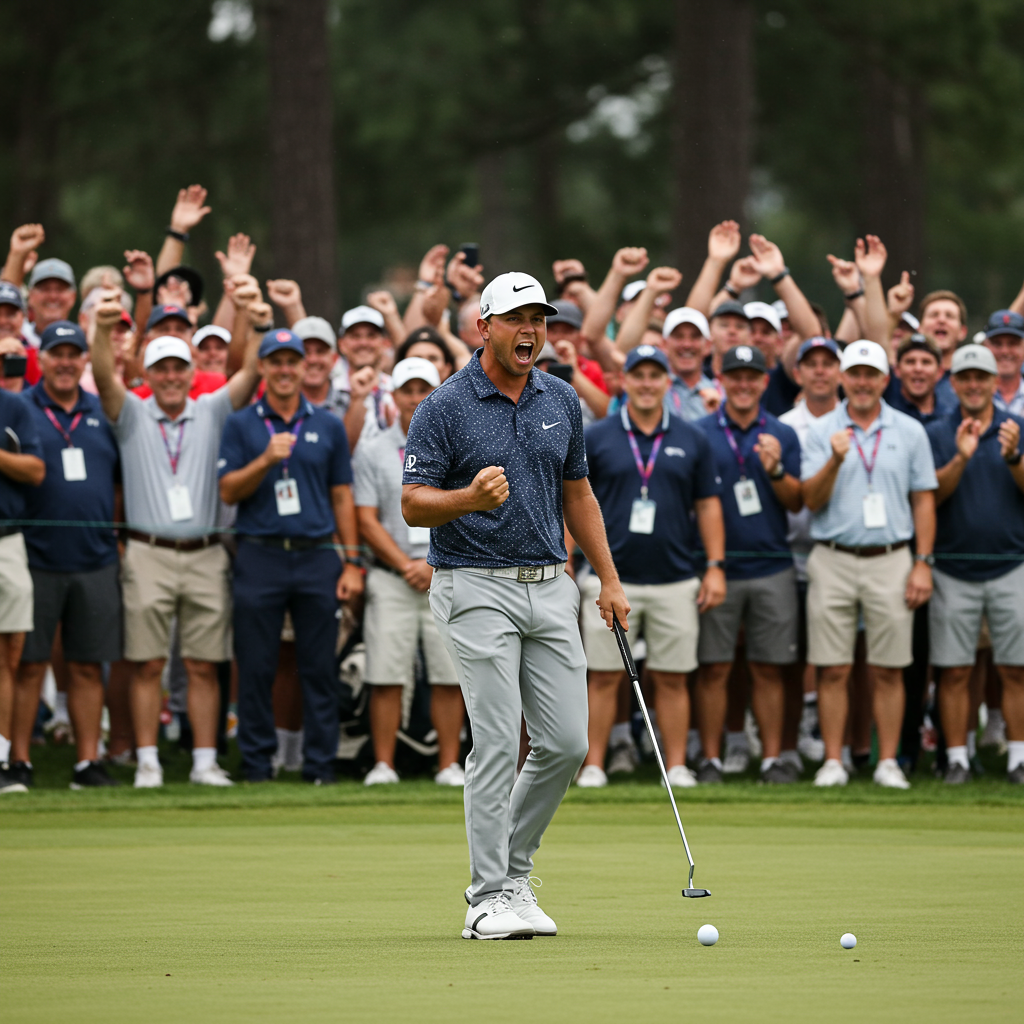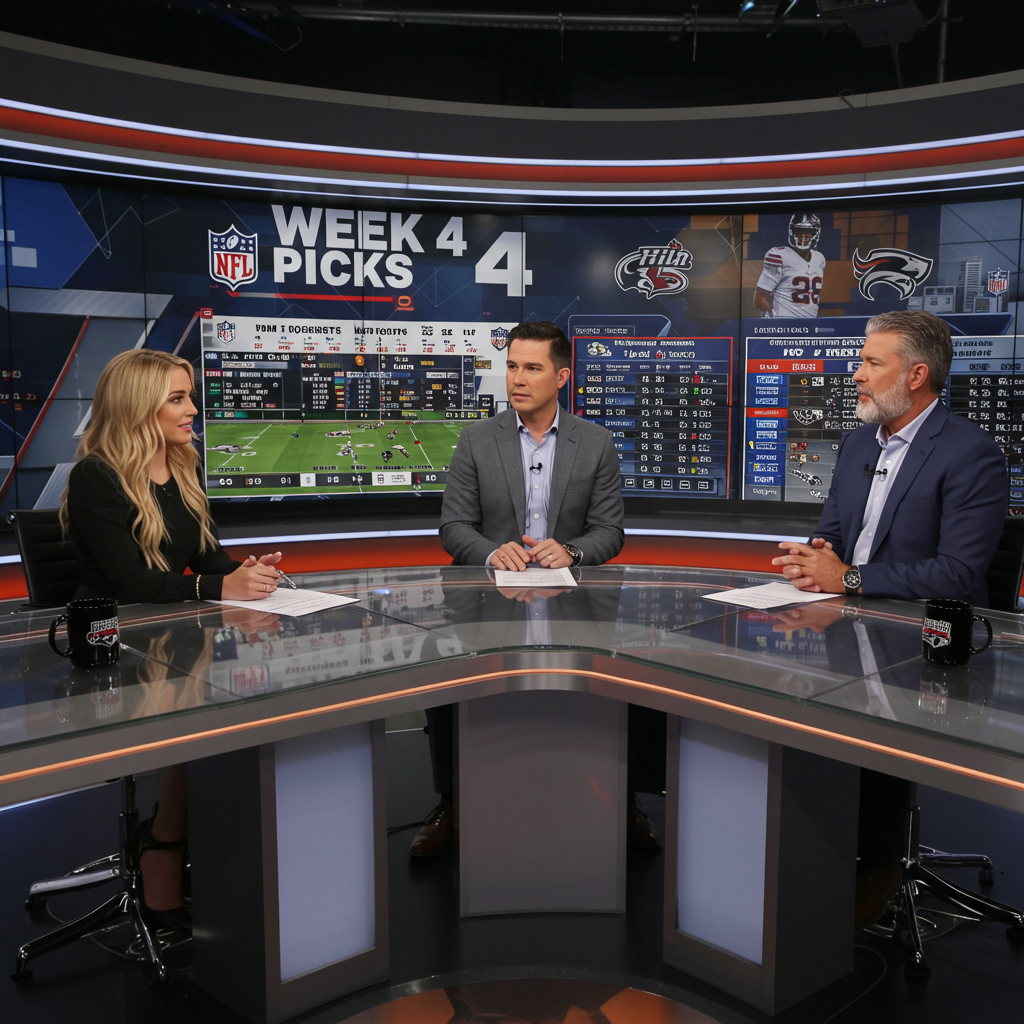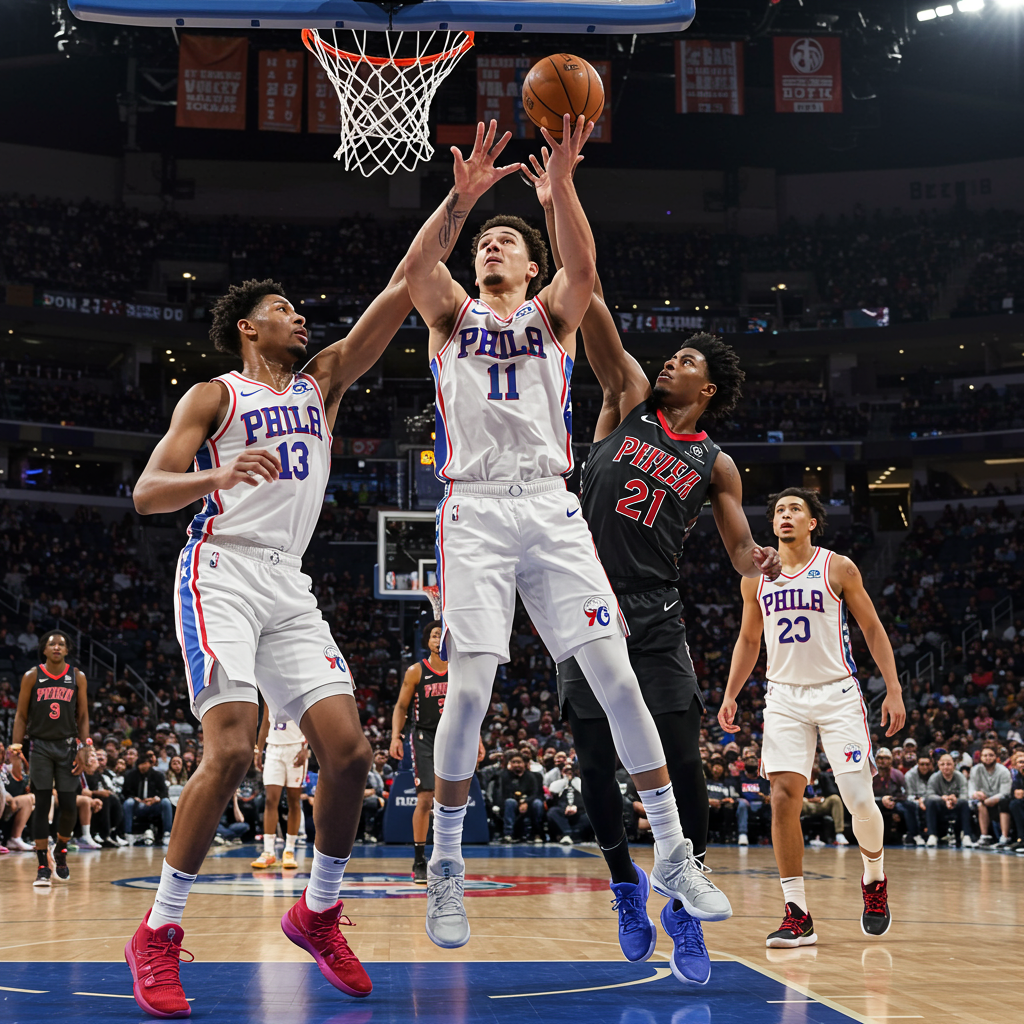Few moments in sports rival the sheer drama of a walk-off finish. In baseball, it’s the crack of the bat sending the ball over the fence; the game is instantly decided, the tension evaporating in celebration. At the 2025 U.S. Open, J.J. Spaun delivered a golfing equivalent, sealing his victory on the 72nd hole with an unforgettable walk-off birdie putt.
An avid Dodgers fan himself, Spaun knows that feeling of instantaneous triumph. His final stroke at Oakmont wasn’t just any putt; it was the decisive shot that ended the tournament, ending the drama and crowning him a major champion. But beyond the incredible spectacle, just how improbable were the numbers behind Spaun’s winning moment?
The Road to the 18th Hole Drama
Spaun’s Sunday charge followed a lengthy 90-minute weather delay. Emerging re-focused, he immediately birdied holes 12 and 14. The momentum peaked on the drivable par-4 17th, where his 310-yard tee shot settled just 17 feet from the pin. A straightforward two-putt secured a crucial birdie, giving him the solo lead heading to the demanding 18th.
Holding a one-shot advantage, Spaun stepped onto the final tee at Oakmont, facing one of golf’s most fearsome finishing holes. His tee shot was perfect – straight down the middle, traveling 308 yards and leaving him 190 yards to the pin.
Oakmont’s Brutal Finishing Test
The 18th hole at Oakmont is notoriously difficult. Throughout the week, only three of the 62 players who completed the hole on Sunday managed to make a birdie before Spaun arrived. This fact alone underscores the challenge ahead.
Echoing Dustin Johnson’s 2016 U.S. Open win at Oakmont, Spaun chose a 6-iron for his approach. However, unlike DJ’s shot that finished four feet away, Spaun’s landed a cautious 64 feet six inches from the hole.
Numerically speaking, this approach shot wasn’t spectacular. From 190 yards, its Strokes Gained: Approach value was -0.08, meaning it actually lost a fraction of a shot to the field average from that distance. The win wouldn’t come from a pin-seeking iron shot; it would have to come on the greens.
A Glimpse of the Line
Before attempting his potentially winning putt, Spaun received a valuable, albeit fortuitous, assist. Playing partners can sometimes provide crucial information, and Viktor Hovland, also on the green facing a long putt (66 feet) from a similar line after missing the fairway, went first. Hovland’s putt narrowly missed but offered Spaun a perfect read on the challenging contours.
The Probability of the Impossible Putt
Standing over the 64-foot six-inch putt, Spaun had two putts to secure the U.S. Open title. On the PGA Tour, a professional’s probability of two-putting from that range is relatively high, around 85 percent. While the immense pressure of the 72nd hole at a major championship isn’t factored into standard tour averages, the odds for at least a two-putt were certainly favorable.
However, the odds of holing a putt from over 64 feet are minuscule. The probability of a pro three-putting from that distance (around 12 percent) is nearly six times higher than their chances of making it (a mere two percent). To emphasize this difficulty, consider Denny McCarthy, widely regarded as one of the best putters on Tour for years. He three-putted the same 18th green from just 34 feet earlier that day.
Adding to the narrative, Spaun had been solid on the greens all weekend, avoiding any three-putts since Friday’s second round. The broadcast graphic simply stated the situation: “Two putts to win the U.S. Open.”
As Spaun stroked the ball, NBC’s Dan Hicks captured the moment with the words, “He doesn’t need to make it. Two putts.” Then, as the ball disappeared into the hole: “HOW. ABOUT. ONE?!”
A Putt of Historic Proportions
J.J. Spaun’s 64-foot, 6-inch birdie putt was the longest holed on the 18th green all week. Even Tyrrell Hatton’s impressive 52-foot par putt in Round 2 paled in comparison.
Remarkably, this was the first putt Spaun had holed from over 35 feet all season on the PGA Tour. Through 972 holes played in 2025 before the 72nd at Oakmont, his longest made putt was less than half the length of his winning stroke.
The statistical impact of the putt is staggering. That single stroke gained an incredible +1.24 shots on the field. To put this in perspective, the PGA Tour leader in Strokes Gained: Putting for 2025, Sam Burns, averages +1.03 shots per round. Only one player since 2004 (Jason Day in 2016) has averaged gaining more than one shot per round on the greens. Spaun did better than that with one swing of the putter.
Gaining over a full stroke on the field with a single shot is exceedingly rare and signifies a moment of exceptional execution under pressure. It even surpasses the Strokes Gained value of Bryson DeChambeau’s famous championship-winning bunker shot on the 72nd hole at Pinehurst the previous year, which gained +0.94 shots.
Oakmont’s 72nd hole continues its tradition of delivering unforgettable U.S. Open drama. For J.J. Spaun, it was a walk-off birdie putt that defied the odds, cementing his place in golf history and highlighting just how improbable his incredible win truly was.




